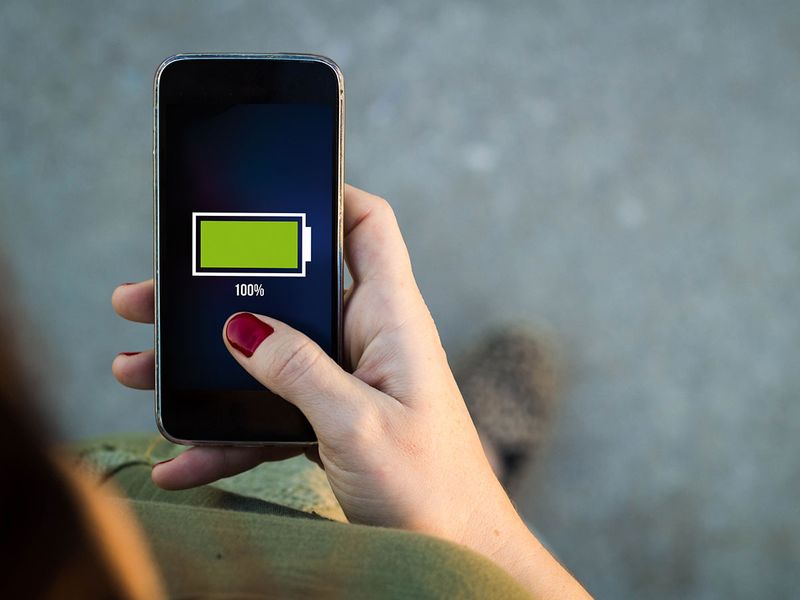
DUBAI: For more than a century, until the mid-1990s, telephones were primarily used for making calls. Until then, the internet existed only in labs, hooking up universities. Twenty years later, the world totally went bananas with smartphones. It's entire reason for being has changed completely. Today, phones are used as music player, chat/email device, exercise monitor, web browser, game machine, voice recorder, movie camera, film editing and display device, and a host of other whiz-bang functions. Who would have known phones would do all these within that short period of time?
Now, let's take a peek into the future real quick. What would smartphones look like in the next 25 years? What features will they have that would look like mad science today? These are the top 5 on my list (feel free to add):
1. Type with your mind, search without typing

Today, you can unlock your phone with your face. With services like Google Assistant, Samsung Bixby and Apple Homepod, your devices can be trained to recognise your voice. Now, get this: think of doing a Google search simply by thinking about a subject. No typing. In the not-too-distant future, phones can keep track of our thoughts too, in a sort of mind-machine interface. This brain-computer interface (BCI), sometimes called a neural-control interface (NCI), is a where an external device (smartphone) can take commands directly from the brain.
Many companies (Facebook, Neuralik, AlterEgo) are tinkering with direct neural interface or brain-machine interface (BMI). With computer input via mind control, it promises to help people with hand deformities or those suffering from Parkinsons. No need to search for and click an app to open it. No need to stretch your finger all the way to the top of the screen to tap it. MIT researchers are working on a gear that allows a user to converse with machines with only their thoughts. The future phone may take on an entirely new form. Remember the failed Google Glass? The next phone could look just like that, just sleekier, faster, and funkier.
2. Longer battery life, over-the-air charging

Current power storage technology is bulky, with low power density. This is about to change. The changes will come on two fronts: battery chemistry and wireless charging. Today, you always run out of juice on your smartphone. Even high-end phones, with massive batteries, only last 2 days, max. When battery is down, you either plug it in for hours or place it over a charging pad (in supported models).
Now, imagine a different future, when with over-the-air charging. In 2019, a tech company called Energous has rolled out a WattUp Mid Field transmitter: put your phone within three feet and it starts charging. And what works for phones would also work for electric vehicles.
Now, BMW has rolled out wireless charging for its EVs. Imagine if phones and electric vehicles also get charged as they move. That may require more powerful transmitters to allow for over-the-air charging at great distances, constantly charging your phone — and also your watch, headphone, car, ship, drone plane — from afar. And your battery has 100% charge all the time? That would usher in a new revolution, the way the telephone, electricity and internal combustion engines changed life on earth.
3. Trade stocks/forex from literally anywhere

Trade absolutely anywhere, except in the North and South poles or in densely-populated cities, where fibre is available anyway. With projects like Starlink, a constellation of thousands of low Earth-orbit (LEO) acting as low-latency internet cellsites, this in theory can match the speed of fibre optics-based connection available to NYSE, London or DAX traders.
So, with a smart phone, everyone can track millisecond gyrations in stocks, commodities or forex markets, and make money (or lose lots of it), based on their own reading of market trends. You could be lying on a beach in some tropical paradise (provided it's not being hammered by a typhoon) while making millions on spot or day trades.
4. Elastic/stretchable displays

Another crazy little thing: and it's already knocking on our doors. Flex display technology is coming to your next phone device. A number of foldable phones are already out: Samsung Galaxy Fold, Huawei Mate X, FlexPai. It's just a matter of time for them to become standard. But what if, instead of folding or unfolding movement, you're able to stretch a screen to increase its size, sort of like strething a chewing gum? Just pull the phone screen diagonally, from two corners. There are innovators, like LG, already
commissioned to pursue development of "stretchable" screens that can elongate them by up to 20%. In 2017, Samsung announced a prototype of a stretchable display, able to be dented up to 12mm without causing damage. That display just bounces back to its original flat shape — similar to a trampoline — so it’s almost like the future is here. Besides stretchable displays, US researchers have also developed the first stretchable integrated circuit. Alternatively, phones of the future could be equipped by powerful lenses that project crisp moving images onto walls. This type of design would let you quickly increase the size of the device when watching videos, but still keep the phone's form factor enough to fit in your pocket.
5. 6G/7G to infinity

So you have a 5G phone, or aspiring to have one. Now, that's old news. 6G is just a breath away, and so is 7G. Simply put, 6G will succeed 5G (which in turm succeeded 4G, etc) as the next generation of mobile data networks. It's touted as significantly faster than 5G, at speeds of ~95 Gb/s. Never mind if a real 6G network does not exist today. Several countries — China, South Korea and Japan — have already shown interest in 6G. Theoretically, 6G could supersede the existing networks and help make a completely new type of internet.
Using higher-frequency radio bands, 6G promises much faster speeds and lower "latency". Nothing is etched in stone — even the term “6G” could be called something else. But here's one fact: big changes are in the offing for internet technology as a whole. This pandemic — with two-year-olds competing with adults for mobile data — has shown us that the bandwidth, latency and throughput available are never enough. We've all become mega consumers of internet data at record rates. We'll leave the discussion on 7G some other time.
Latency is a time delay between the cause and the effect of some physical change in the system being observed. Within gaming circles, is also known as as "lag", in other words, the trip time from the browser to the server and back. It is obviously desired for this time to remain as close to ZERO as possible. But there can be a few things at work that prevent that affect latency times.
Bandwidth determines how narrow or wide a pipe is. The narrower it is, the less data is able to be pushed through it at once and vice-versa.
Throughput is the amount of data which can be transferred over a given time period.
"Smartphone" - Google News
October 26, 2020 at 07:31PM
https://ift.tt/3jy00UJ
What your smartphone will look like 25 years from now - Gulf News
"Smartphone" - Google News
https://ift.tt/2QXWyGT
https://ift.tt/2KSW0PQ
Bagikan Berita Ini
















0 Response to "What your smartphone will look like 25 years from now - Gulf News"
Post a Comment